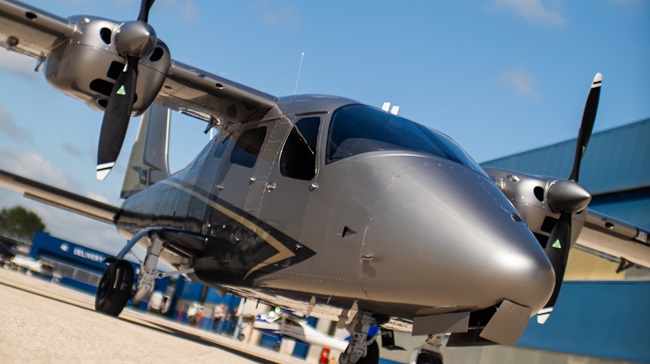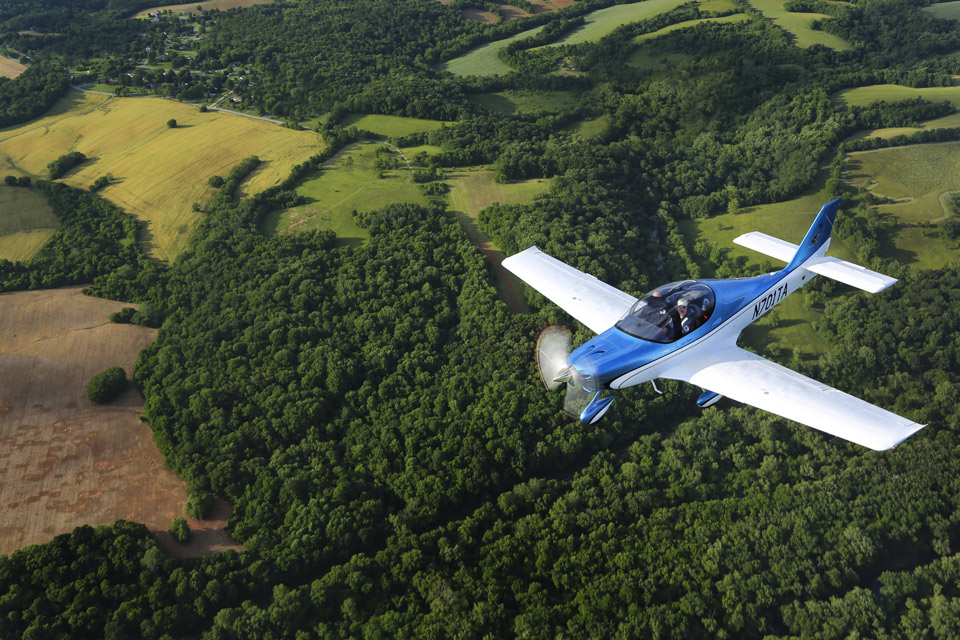
In this country it would be a “goshawk,” but in Italy the mountain bird of prey is an “astore” (pronounced uh STORE’ eh). That’s what two Italian brothers named their first airplane after first building models as kids during World War II, keeping their passion for flying intact despite devastation all around them—including their bombed home. Today one of them, Luigi Pascale, is the head designer at Tecnam and that is how the Astore, Tecnam’s new luxury Light Sport aircraft with an all-metal airframe, got its name.
At age 90 it would be easy to say Pascale is capping his career, ending with a highly refined namesake of the 1948 design (although it didn’t fly until 1951) that had been built from borrowed parts and powered by a barely working engine that fell several horses short of its advertised 65 horsepower. That would be wrong. Pascale, who still takes an aircraft off the line and test-flies it, is now at work on an 11-passenger piston-engine airliner.
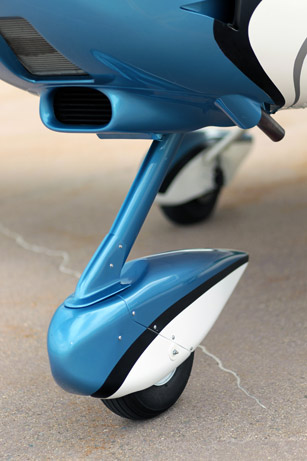 The Astore has an interesting quirk. It is tied down for the night at the wings and nose, not the tail, using an engine support bracket under the cowling to secure the nose.
The Astore has an interesting quirk. It is tied down for the night at the wings and nose, not the tail, using an engine support bracket under the cowling to secure the nose.
When taxiing Yeager advises holding the control stick full forward to keep the aircraft from rocking back on its tail after hitting a bump in the taxiway, unless winds dictate some other control position. It was a windy day when the Astore was flown on a test flight in Frederick and especially during an air-to-air photoshoot later that day near historic Harpers Ferry, West Virginia, but I never experienced the tipping problem.
Drop and plop. There’s little point in noting that the Astore was stable during stalls (although there was a slight wing drop during a full-power stall), steep turns, and slow flight (at 38 knots indicated—it could have gone slower). If it wasn’t stable, it wouldn’t have passed ASTM industry standards for Light Sport aircraft. Obviously, visibility is terrific, given the bubble canopy—although you will want to buy auto store stick-on sun shields. Ventilation thanks largely to side-canopy adjustable vents is more than adequate to keep you cool, and the canopy can be slid back during taxi in summer.
To most pilots, it’s not stall performance that matters but landing behavior.Our tower controller was busy with helicopters and fast twins when Yeager and I returned from the practice area west of Frederick, and offered an expedited landing. I accepted and reduced power to idle abeam the runway touchdown zone, adjusting elevator trim with an electric switch on the control stick to establish a 60-knot glide. Once on final I used a forward slip to increase the descent rate and established a 55-knot final approach speed with flaps fully down. It should be noted that some Light Sport aircraft lack enough rudder authority to perform a forward slip, but the Astore had no problem.
Light Sport aircraft, because of their low mass, tend to lose momentum rapidly and reach a high sink rate with the throttle at idle. It’s become my habit with any Light Sport aircraft to land with a bit of power to avoid rapid deceleration. Once above the runway, I added a slight amount of power and kept it there. Once in the flare there was adequate time to judge the descent rate for the slowest touchdown possible, which the operating handbook suggests should be 41 knots indicated airspeed. What resulted was a smooth landing thanks more to airplane design than to pilot technique. On the second flight around the pattern the tower again asked for an expedited landing, again requiring a forward slip to quickly lose altitude, but again the result was a smooth touchdown. Any airplane that’s easy to land is automatically a great airplane.
Astore looks like it is already flying while sitting on the ramp. That, and the high probability of an excellent landing, means you’ll arrive in style aboard a design that was 66 years in the making.
Email [email protected]
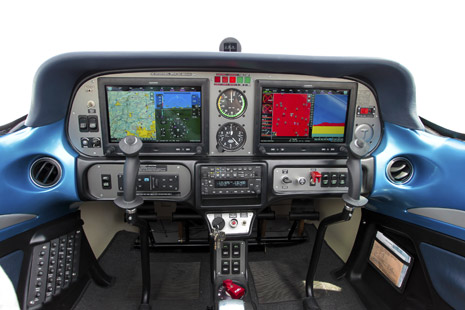 Italy is home base for sports cars, and Pascale saw no reason why those who own them should not receive the same quality in a personal aircraft. The standard price of the two-place Astore is $147,000 for a ready-to-fly aircraft with analog flight instruments, but with an iPad mini on the panel and electronic engine instruments. It has the standard 100-horsepower Rotax 912ULS2. That price includes shipping the aircraft from Italy to the United States.
Italy is home base for sports cars, and Pascale saw no reason why those who own them should not receive the same quality in a personal aircraft. The standard price of the two-place Astore is $147,000 for a ready-to-fly aircraft with analog flight instruments, but with an iPad mini on the panel and electronic engine instruments. It has the standard 100-horsepower Rotax 912ULS2. That price includes shipping the aircraft from Italy to the United States.
The Full Monty. That’s not the one that came to AOPA headquarters in Frederick, Maryland, from Tecnam’s newly finished showroom in Sebring, Florida. Flown by Tecnam official Shannon Yeager, the first Astore in the United States was equipped with every option by its new undisclosed owner. Its fly-away cost was $195,000, and included a Garmin G3X touch-screen glass cockpit and Garmin radios, a Garmin intercom with music and telephone inputs, a Garmin autopilot, a special paint scheme, and a separate control panel for the autopilot. The G3X has Garmin’s new angle of attack indicator that alerts using a graphic display when the aircraft is close to an aerodynamic stall. Base price for an Astore with a two-screen G3X system and 912iS engine is $176,000, while one equipped with a dual Dynon glass cockpit is $173,500.
$195,000 price included the $12,700 upgrade for the fuel-injected, all-electronic Rotax 912iS engine, also 100 horsepower. The system also has two regulator-rectifiers to provide electrical power. Regulator Lane A runs the engine management system while Regulator Lane B charges the battery and powers aircraft appliances, said Dean Vogel of Lockwood Aviation at Sebring. Should both fail, a backup battery switch can be thrown, and the aircraft battery will keep the aircraft cylinders firing for several minutes up to an hour, depending on the volume of the battery and how good you are at turning off unnecessary electrical equipment. The computer-controlled engine promises to keep fuel consumption at the most efficient level—no pilot input needed. The engine is capable of powering a Light Sport aircraft to 120 knots true airspeed, the limit for the Light Sport category.
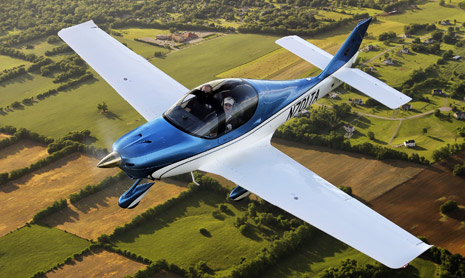 Tecnam dealer Yeager reported getting 111 knots true airspeed during the seven-and-a-half-hour flight from Sebring to AOPA headquarters at Frederick but he didn’t have the ground-adjustable propeller option. That’s only about 14 knots faster than the P48, as the original Astore was also called (P for Pascale and 48 for the year of design, 1948). During a cruise speed test after he arrived, the aircraft achieved a speed of 113 knots. That seemed a bit slow for a top-of-the-line light sport aircraft. Once he returned to Florida, he flew tests with the optional three-blade, ground-adjustable propeller and reported 118 knots at 5,500 rpm—the highest suggested normal power setting. The maximum limit for engine speed is 5,800 rpm.
Tecnam dealer Yeager reported getting 111 knots true airspeed during the seven-and-a-half-hour flight from Sebring to AOPA headquarters at Frederick but he didn’t have the ground-adjustable propeller option. That’s only about 14 knots faster than the P48, as the original Astore was also called (P for Pascale and 48 for the year of design, 1948). During a cruise speed test after he arrived, the aircraft achieved a speed of 113 knots. That seemed a bit slow for a top-of-the-line light sport aircraft. Once he returned to Florida, he flew tests with the optional three-blade, ground-adjustable propeller and reported 118 knots at 5,500 rpm—the highest suggested normal power setting. The maximum limit for engine speed is 5,800 rpm.
There also is a $24,900 option for the Rotax 914 turbo engine that includes the ground-adjustable Sensenich three-blade propeller. Ground adjustments to the propeller blade angles allow for the highest possible cruise speed or good climb performance on takeoff. Light Sport aircraft are not allowed to have propellers that can be adjusted in flight, which allow fully certified aircraft to alternate between maximum climb performance and maximum cruise performance.
There is also a Czech-designed recovery parachute option available for use during in-flight emergencies. The 17-pound Magnum 601 rocket-deployed parachute for the Astore is $6,500 installed.
Hardware and quirks. Light Sport aircraft generally fall into two categories; they either exude quality or look like the manufacturer emptied the local hardware store for switches and fittings. The Astore falls in the first category for engineering, fit, and finish, raising the airframe design to the level of sculpture. The throttle should be in a contemporary art museum.
This is the first Light Sport I have tested with adjustable seats on rails (many use a combination of seat cushions and adjustable rudder pedals) for both pilot and passenger. Clever design includes a rubber pad in front of the seat—once it is pushed to the rear position—to avoid stepping on the leather seats during entry and exit. Headset jacks are placed under the armrest, eliminating the need found in some Light Sport aircraft to demonstrate the flexibility of a contortionist by plugging into jacks behind the seat. Electric elevator trim is transferrable between the pilot and co-pilot using a switch on the panel, and both pilot and passenger have swiveling map lights at the top front of the canopy.
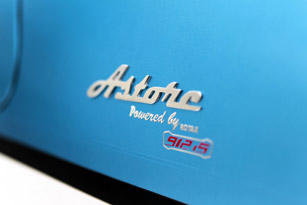
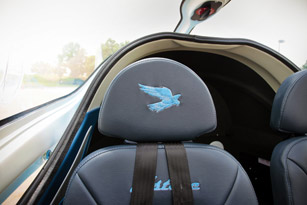
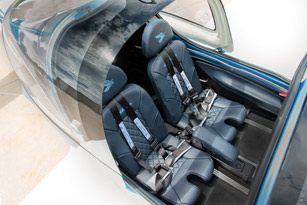
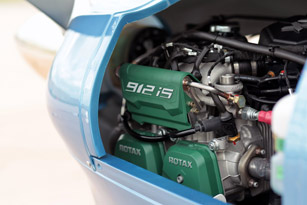
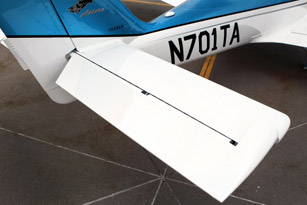
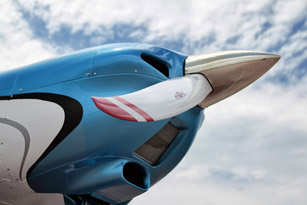
Taxi tip
The Astore has a free-castering nosewheel controlled by differential braking.
What’s really spiffy?
• Air vents sculpted into the cabin walls.
• Slide-open canopy.
Keep it cool
Astore can accept the 22-pound AMT FlyCool all-electric air conditioner made especially for Light Sport aircraft. It promises to drop cabin temperature 20 degrees Fahrenheit in 10 minutes.
SPEC SHEET
Tecnam Astore
Base price: $147,000 ($176,000 with Rotax 912iS)
Specifications
Powerplant | 100 hp Rotax 912iS
Recommended TBO 2,000 hr
Propeller | Sensenich two blade, 68 in dia, wood
Length | 23 ft
Height | 7 ft 6 in
Wingspan | 28 ft 5 in
Wing area | 131 sq ft
Wing loading | 10.1 lb/sq ft
Power loading | 13.2 lb/hp
Seats | 2
Cabin width | 3 ft 4 in
Cabin height | 3 ft 3 in
Empty weight | 809 lb
Empty weight, as tested | 877 lb
Max ramp weight | 1,324 lb
Max gross weight | 1,320 lb
Useful load | 511 lb
Useful load, as tested | 443 lb
Payload w/full fuel | 338 lb
Payload w/full fuel, as tested | 270 lb
Max takeoff weight | 1,320 lb
Max landing weight | 1,320 lb
Fuel capacity, std | 29 gal (28.8 gal usable) 174 lb (172.8 lb usable)
Baggage capacity | 77 lb
Performance
Takeoff distance, ground roll | 442 ft
Takeoff distance over 50-ft obstacle | 1,160 ft
Max demonstrated crosswind component | 20 kt
Rate of climb, sea level | 885 fpm
Cruise speed/endurance w/45-min rsv, std fuel (fuel consumption) 4,000 ft @ 75% power, best economy | 113 kt/6 hr (30.6 pph/4.1 gph)
Service ceiling | 15,500 ft
Landing distance over 50-ft obstacle | 1,083 ft
Landing distance, ground roll | 602 ft
Limiting and recommended airspeeds
VX (best angle of climb) | 57 KIAS
VY (best rate of climb) | 69 KIAS
VA (design maneuvering) | 97 KIAS
VFE (max flap extended) | 68 KIAS
VNO (max structural cruising) | 115 KIAS
VNE (never exceed) | 150 KIAS
VR (rotation) | 39 KIAS
VS1 (stall, clean) | 35 KIAS
VSO (stall, in landing configuration) | 32 KIAS
For more information contact Tecnam US Inc., 6 Alan Jay Way, Suite 1, Sebring, Florida 33870, telephone 863-655-2400, website (tecnam.com), email [email protected].
All specifications are based on manufacturer’s calculations. All performance figures are based on standard day, standard atmosphere, sea level, gross weight conditions unless otherwise noted.
Extra
Tests with a three-blade propeller show cruise speeds of 118 knots true airspeed.
Air-to-air photos were taken north of the town of Harpers Ferry, West Virginia, above the Potomac River. While the aircraft fell short of the maximum-allowed Light Sport cruise speed of 120 knots true, this aircraft later flew at 118 knots with a different propeller. The cockpit design reflects years of evolution by Tecnam design engineers. Notice the air vents sculpted into the lower right and left of the panel. The idea was to replicate a luxury car interior. The propeller spinner is plastic.


